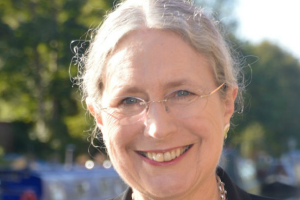How to develop a robust succession plan


When the time comes to retire, or dissolve a GP practice, it is vital to take steps to eliminate or reduce any potential issues in advance.
Having a robust ‘succession plan’ in place is key, for the protection of the practice and patients, and the interests of partners. This should be constantly reviewed on an annual basis by all parties involved.
Here are the key points to consider for your succession plan.
Get your house in order
Existing partnership agreements including your property ownership and/or lease as well as your medical services contract need to be up-to-date and signed by all partners, both new and existing. This will help to clarify the full commitment and share of profits for each partner along with any financial commitments and provisions.
GPs should keep this process under review on an annual basis, considering both strategic and personal circumstances. Has the partnership got a spread of ages to ensure that all partners don’t retire around the same time? Speaking regularly with other partners about future plans and individual retirement goals is paramount to ensuring a smooth process – everybody knows where they stand.
If, for instance, any of your original partners have already retired or new partners have joined, these changes should have been documented following the provisions of the partnership deed and in your property deeds or lease. If they have not been, this will have an impact on the terms governing your partnership. There may be more extensive work to do before you are clear of all your practice obligations and liabilities. Having a strategic eye on the partnership agreement will be worth its weight in gold when the time comes to act.
When you have formulated plans, discuss them with your partners and reach an outline agreement about what you want to happen next. Failure to do this can cause delays, discord and expense. You then would be well advised to take legal advice to ensure that your plans can be carried through and that all key aspects are included.
Give the required notice
The most basic aspect of partners coming and going is the need to notify NHS England or equivalent in the devolved nations. In England, the medical services contract provides that you must give 28 days’ notice to the CCG and notify that from a certain date you will not be a partner at the practice. The requirement is only to give notice not to obtain consent. There is generally no time limit on replacing a partner unless there is only one GP partner left in the practice, in which case the contract will come to an end and have to be retendered by your commissioners.
Bricks and mortar
Property is a key element of any succession plan.
Generally speaking, a partner’s interest in the practice property will be held as freehold or leasehold and should be clearly outlined in the partnership agreement.
If the premises are leased, you will need to approach the leaseholder to ensure the outgoing partner’s name can be removed from the lease agreement and an incoming partner can be added once appointed. In this case it would be a straight swap, but you will need to have your lease reviewed to see what terms are set out for any change (this is usually called ‘assignment’).
If the partners own the property, the outgoing partner will need to decide whether he or she wants to hold on to his share in the property after leaving the practice (if that is permitted in the documentation) otherwise the property interest will have to be acquired by the continuing partners, or perhaps an incoming new partner subject to a valuation.
If the decision is made to keep an interest in the property as a freeholder, then the newly retired GP will continue to own that interest after he or she has left the practice and become entitled to a share of the notional rent received by the practice from the NHS.
Solo GPs
Retirement is not a straightforward process for single-handed GPs.
One option is simply to hand back the contract to the NHS under a voluntary termination. It is then the responsibility of the commissioners to find alternative GPs for the patients.
Another option for single handers is to take another partner on and enter into a partnership agreement for a short term. The single hander could then in due course give notice that they were heading for retirement and the other partner would become the sole handler, avoiding the contract being put out to tender and, more importantly, affecting the service to patients.
Pre-empt recruitment problems
It has been common for many years for a partnership to seek new, younger partners to replace those who are retiring and to facilitate the payment out of monies due to the retiring partner. However, recruiting young practitioners to replace retiring partners is increasingly difficult in the current climate.
Many younger GPs are opting to become and remain salaried doctors rather than enter a partnership. They feel little incentive to take on the added responsibilities and many view the risk as too great. Unlike solicitors’ and accountancy practices, a GP practice cannot convert to a limited liability partnership (LLP) to limit the liability of each partner.
Practices that own their freeholds are also finding it increasingly difficult to recruit new partners because of the need to contribute capital to buy into the property. It is always advisable to be completely transparent during the recruitment process and highlight the need for a capital contribution to avoid any disputes or disruption from arising.
Assistance
Involve your practice manager and where appropriate your administrative team in your succession planning, to ensure there are no surprises and they are well prepared to assist with, for example, efforts to recruit partners long-term.
If you face partnership succession issues, take legal advice. Whether it’s an arising dispute concerning partnership accounts, partnership property, deceased partners or partner exclusions, an experienced medical partnership solicitor should be your first port of call.
Katharine Mellor is a partner at Slater Heelis LLP









